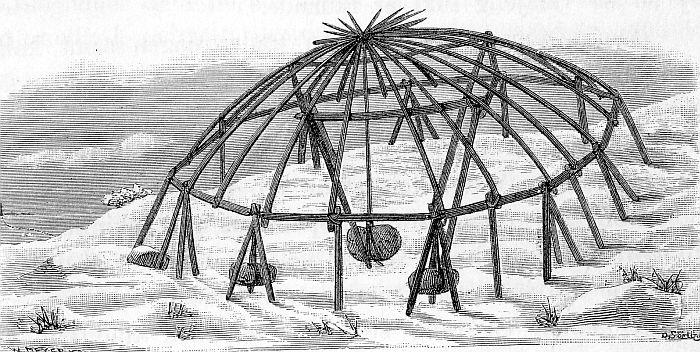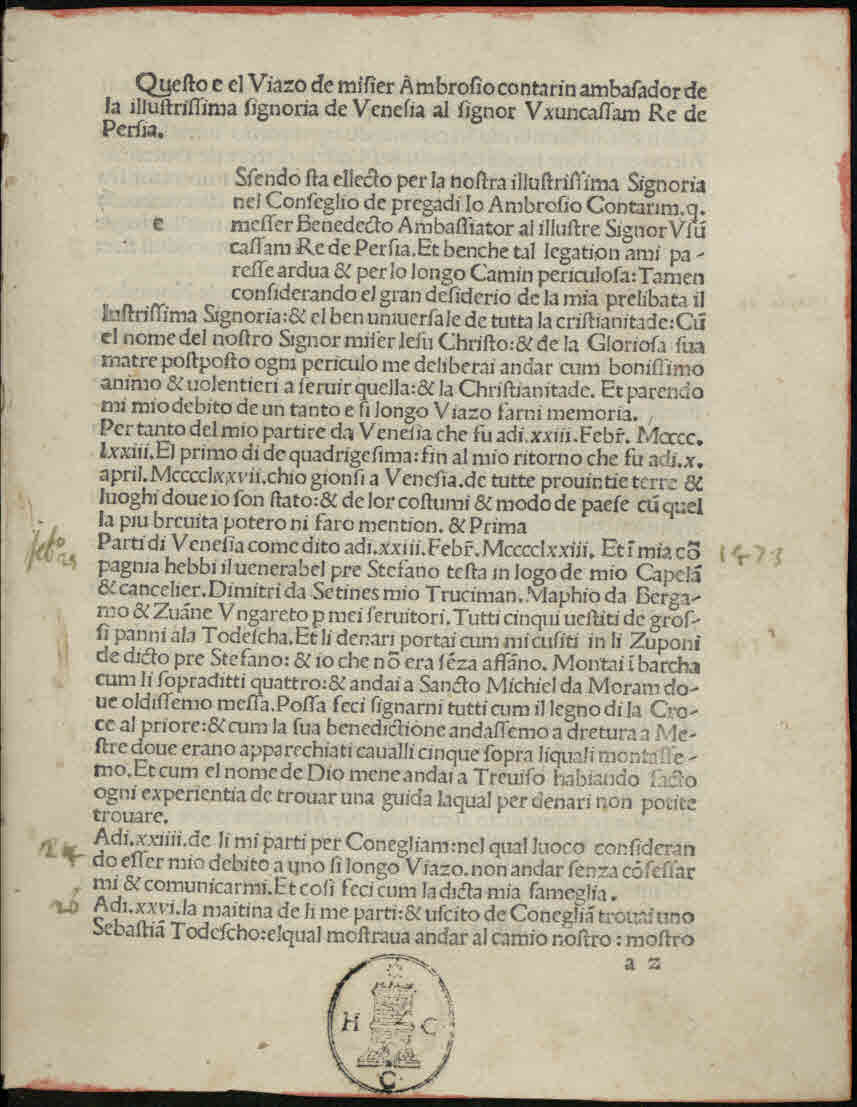|
List Of Italian Explorers
This is list of ItalianThough the modern state of Italy Proclamation of the Kingdom of Italy, was established in 1861, the Latin equivalent of the Italians#Name, term Italian had been in use for natives of Italian geographical region, the region since antiquity. See Pliny the Elder, ''Epistulae (Pliny), Letters'' 9.23. explorers and navigators () in alphabetical order: *Giuseppe Acerbi (1773–1846) *Enrico Alberto d'Albertis (1846–1932) *Carlo Amoretti (1741–1816) *Paolo Andreani (1763–1823) *Orazio Antinori (1811–1882) * Alberto Maria de Agostini (1883–1960) *Giosafat Barbaro (1413–1494) *Giacomo Beltrami (1779–1855) *Scipione Borghese, 10th Prince of Sulmona, Scipione Borghese (1871–1927) *Vittorio Bottego (1860–1897) *Giacomo Bove (1852–1887) *Sebastian Cabot (explorer), Sebastiano Caboto (1474–1557) *Umberto Cagni (1863–1932) *Giovanni Caboto (1450–1500) *Alvise Cadamosto (1432–1483) *Gaetano Casati (1838–1902) *Giuseppe Castiglione (Jesuit pai ... [...More Info...] [...Related Items...] OR: [Wikipedia] [Google] [Baidu] |
Ridolfo Del Ghirlandaio - Ritratto Di Cristoforo Colombo (1520)
Ridolfo is a given name. Notable people with the name include: *Ridolfo Luigi Boccherini *Ridolfo II da Varano di Camerino (1344–1384), condottiero operating in Italy *Ridolfo Campeggi (1565–1624), Italian nobleman, Marinist poet, librettist, and playwright *Ridolfo Capo Ferro, Italian fencing master, author of his rapier fencing treatise published 1610 *Michele di Ridolfo del Ghirlandaio, (1503–1577), Italian painter who worked in Florence *Ridolfo Ghirlandaio (1483–1561), Italian Renaissance painter active mainly in Florence *Ridolfo Livi (1856–1920), Italian anthropologist *Roberto di Ridolfo (1531–1612), Italian and Florentine nobleman and conspirator *Ridolfo Schadow (1786–1822), German sculptor {{Given name ... [...More Info...] [...Related Items...] OR: [Wikipedia] [Google] [Baidu] |
Giacomo Bove
Giacomo Bove (23 April 1852 – 9 August 1887) was an Italian explorer. He sailed with Adolf Erik Nordenskiöld on the first voyage through the north-east passage, and later explored Tierra del Fuego and the Congo River. Early years Giacomo Bove was born in Maranzana, Asti, Kingdom of Sardinia, Piedmont, on 23 April 1852 to Francesco Bove and Antonia Garbarino. He was the eldest of five brothers. His family owned a vineyard and made wine for sale. He went to primary school in Maranzana and then in Acqui Terme, before being admitted to the Naval Academy in Genoa. He graduated with honors, and was able to serve as a midshipman on the scientific expedition of the ''Governolo'' to the Far East. The ''Governolo'' mission (1872–1873) mapped the coast of Borneo, performed hydrological surveys, and studied the ethnography of the local people. The ''Governolo'' also visited Malaya, the Philippines, China and Japan. Apart from its scientific goals, Italy was interested in opening up t ... [...More Info...] [...Related Items...] OR: [Wikipedia] [Google] [Baidu] |
Giovanni Da Pian Del Carpine
Giovanni da Pian del Carpine (or Carpini; anglicised as ''John of Plano Carpini''; – 1 August 1252) was a medieval Italian diplomat, Catholic archbishop, explorer and one of the first Europeans to enter the court of the Great Khan of the Mongol Empire. He was the author of the earliest important Western account of Northern and Central Asia, Eastern Europe, and other regions of the Mongol dominion. He served as the Primate of Serbia, based in Antivari, from 1247 to 1252. Life before the journey Giovanni appears to have been a native of Umbria, in central Italy. His surname was derived from Pian del Carpine (literally "Hornbeam Plain"), an area known later as Magione, between Perugia and Cortona. He was one of the companions and disciples of his near-contemporary and countryman Saint Francis of Assisi. Highly esteemed within the Franciscan order, Giovanni had a prominent role in the propagation of its teachings in northern Europe, holding in succession the offices of ... [...More Info...] [...Related Items...] OR: [Wikipedia] [Google] [Baidu] |
Antonio Da Noli
Antonio is a masculine given name of Etruscan origin deriving from the root name Antonius. It is a common name among Romance language–speaking populations as well as the Balkans and Lusophone Africa. It has been among the top 400 most popular male baby names in the United States since the late 19th century and has been among the top 200 since the mid 20th century. In the English language, it is translated as Anthony, and has some female derivatives: Antonia, Antónia, Antonieta, Antonietta, and Antonella'. It also has some male derivatives, such as Anthonio, Antón, Antò, Antonis, Antoñito, Antonino, Antonello, Tonio, Tono, Toño, Toñín, Tonino, Nantonio, Ninni, Totò, Tó, Tonini, Tony, Toni, Toninho, Toñito, and Tõnis. The Portuguese equivalent is António (Portuguese orthography) or Antônio (Brazilian Portuguese). In old Portuguese the form Antão was also used, not just to differentiate between older and younger but also between more and less importan ... [...More Info...] [...Related Items...] OR: [Wikipedia] [Google] [Baidu] |
Andrea Corsali
Andrea Corsali (1487—?) was an Italian explorer who worked in the service of Giuliano di Lorenzo de' Medici of Florence and Lorenzo II de' Medici, duke of Urbino. Corsali traveled to Asia and the south seas aboard a Portuguese merchant vessel, sending home written accounts of the lands and peoples which he encountered along the way. Two of Corsali’s letters from the 'East Indies' were published in Florence in 1518, and again in Giovanni Battista Ramusio, ''Delle navigationi et viaggi'' (Venice, 1550), along with accounts by other travelers and merchants such as Giovanni da Empoli (1483-1518). He also noted that Sumatra and Ceylon (Sri Lanka) are two distinct islands (ancient geography confused them with the name of Taprobane). Corsali’s death date is unknown. Corsali is known in Italy for having identified New Guinea, previously unknown to the Italians, and for having hypothesized the existence of Australia, although he never disembarked there himself. On a voyage in 1516 fro ... [...More Info...] [...Related Items...] OR: [Wikipedia] [Google] [Baidu] |
Niccolò De' Conti
Niccolò is an Italian male given name, derived from the Greek Nikolaos meaning "Victor of people" or "People's champion". There are several male variations of the name: Nicolò, Niccolò, Nicolas, and Nicola. The female equivalent is Nicole (name), Nicole. The female diminutive Nicoletta is used although seldom. Rarely, the letter "C" can be followed by a "H" (ex. Nicholas). As the letter "K" is not part of the Italian alphabet, versions where "C" is replaced by "K" are even rarer. People with the name include: Given name In literature: * Niccolò Ammaniti (born 1966), Italian writer * Niccolò Machiavelli (1469–1527), Italian political philosopher, musician, poet, and romantic comedic playwright * Niccolò Massa (1485–1569), Italian anatomist who wrote an early anatomy text ''Anatomiae Libri Introductorius'' in 1536 In music: * Niccolò Castiglioni (1932–1996), Italian composer and pianist * Niccolò da Perugia, 14th-century Italian composer of the trecento * Niccolò ... [...More Info...] [...Related Items...] OR: [Wikipedia] [Google] [Baidu] |
Ambrogio Contarini
Ambrogio Contarini (1429–1499) was a Venetian nobleman, merchant and diplomat known for an account of his travel to Iran, where he met Giosafat Barbaro.Bertotti, Filippo (1992), "Contarini, Ambrogio", in: ''Encyclopædia Iranica'', Vol. VI, Fasc. 2, p. 220Online (Accessed February 21, 2012) Life Ambrogio Contarini was a member of the patrician family of Contarini and spent his youth in the Ottoman capital of Constantinople as a merchant. He left the city after the Ottoman–Venetian war began in 1463. In 1470, he was aboard the ''Aegeus'', fighting the Ottomans at sea. The Republic of Venice sought to forge a larger alliance against the Ottoman Empire and sent Contarini with a diplomatic mission to Uzun Hassan, the Iranian ruler of the Aq Qoyunlu clan. He left Venice in February 1474, traveled through Austria, Poland, and the Caucasus. He reached Tabriz in August 1474. In October, he met Uzun Hassan at his capital of Isfahan. He was kindly received, but the Venetian propo ... [...More Info...] [...Related Items...] OR: [Wikipedia] [Google] [Baidu] |
Christopher Columbus
Christopher Columbus (; between 25 August and 31 October 1451 – 20 May 1506) was an Italians, Italian explorer and navigator from the Republic of Genoa who completed Voyages of Christopher Columbus, four Spanish-based voyages across the Atlantic Ocean sponsored by the Catholic Monarchs, opening the way for the widespread European Age of Discovery, exploration and colonization of the Americas. His expeditions were the first known European contact with the Caribbean and Central and South America. The name ''Christopher Columbus'' is the Anglicisation (linguistics), anglicization of the Latin . Growing up on the coast of Liguria, he went to sea at a young age and traveled widely, as far north as the British Isles and as far south as what is now Ghana. He married Portuguese noblewoman Filipa Moniz Perestrelo, who bore a son, Diego Columbus, Diego, and was based in Lisbon for several years. He later took a Castilian mistress, Beatriz Enríquez de Arana, who bore a son, Ferdinand ... [...More Info...] [...Related Items...] OR: [Wikipedia] [Google] [Baidu] |
Giuseppe Castiglione (Jesuit Painter)
Giuseppe Castiglione, S.J. ( zh, s=郎世宁, t=郎世寧, p=Láng Shìníng; 19 July 1688 – 17 July 1766), was an Italian Jesuit brother and missionary in China, where he served as an artist at the imperial court of three Qing emperors – the Kangxi, Yongzheng and Qianlong emperors. He painted in a style that is a fusion of European and Chinese traditions. Early life Castiglione was born in Milan's San Marcellino district on 19 July 1688. He was educated at home with a private tutor, then a common practice among wealthy families. He also learned to paint under the guidance of a master. In 1707, he entered the Society of Jesus in Genoa aged 19. Although a Jesuit, he was never ordained as a priest, instead joining as a lay brother. Works Paintings In the late 17th century, a number of European Jesuit painters served in the Qing court of the Kangxi Emperor who was interested in employing European Jesuits trained in various fields, including painting. In the e ... [...More Info...] [...Related Items...] OR: [Wikipedia] [Google] [Baidu] |
Gaetano Casati
Gaetano Casati (4 September 1838 – 7 March 1902) was an Italian explorer of Africa, born in Lesmo (now in the Italian region Lombardy), at that time in the Austrian Empire. After studying at the Academy in Pavia he entered the Italian army in 1859 and served there until 1879. On December 24, 1879, he sailed for Africa under commission of the Società d'Esplorazione Commerciale d'Africa. He followed the course of the Welle river and explored the basin of the Bahr-el-Ghazal. In 1882 he was held prisoner for some time by native chiefs of Uganda. In 1883 he joined Emin Pasha and was shut in with him by the Mahdi insurrection. Subsequently, he lived in the Kingdom of Kabba Rega, was condemned to death by the monarch, but escaped to Lake Albert, where Emin Pasha rescued him in 1888. In December 1889, Casati reached the coast with Emin Pasha and Henry Morton Stanley, who had led the Emin Pasha Relief Expedition. Besides reports about his travels, he published ''Dieci anni ... [...More Info...] [...Related Items...] OR: [Wikipedia] [Google] [Baidu] |
Alvise Cadamosto
Alvise Cadamosto (surname cf. ''Ca' da Mosto, da Cadamosto, da Ca' da Mosto''; also known in Portuguese as ''Luís Cadamosto''; mononymously ''Cadamosto'') (; ) (c. 1432 – 16 July 1483) was a Venetian explorer and slave trader, who was hired by the Portuguese prince Henry the Navigator and undertook two known journeys to West Africa in 1455 and 1456, accompanied by the Genoese captain Antoniotto Usodimare. Some have credited Cadamosto and his companions with the discovery of the Cape Verde Islands and the points along the Guinea coast from the Gambia River to the Geba River (in Guinea-Bissau), the greatest leap in the Henrican discoveries since 1446. Cadamosto's accounts of his journeys, including his detailed observations of West African societies, have proven invaluable to historians. Background Alvise was born at the Ca' da Mosto, a palace on the Grand Canal of Venice from which his name derives. His father was Giovanni da Mosto, a Venetian civil servant and merchant ... [...More Info...] [...Related Items...] OR: [Wikipedia] [Google] [Baidu] |





